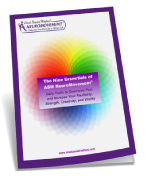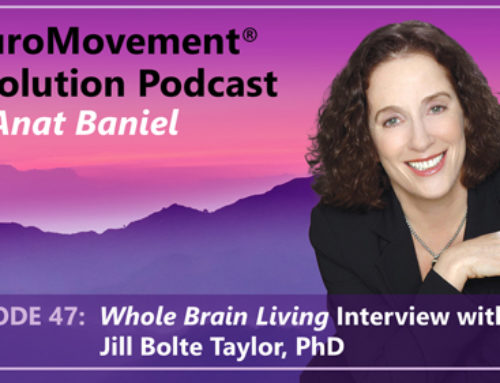How We Optimize Learning in Your Child’s NeuroMovement Lesson
Why Is My Child’s NeuroMovement Lesson Only 30 Minutes When I Paid for 45 Minutes?
I recently received a question (that I have received many times in the past), from a concerned parent regarding the length of the NeuroMovement® Lessons her son was getting from our practitioners at our Anat Baniel Method® (ABM) Center in San Rafael, California.
I felt the genuine confusion and distress of this very loving and committed mom and wanted to provide a window into the way we think and how we decide when it is time to stop a lesson.
I decided to share this with anyone who may be interested in finding out about this aspect of our approach to optimizing learning with this method.
The question and my answer follow.
Question: Why don’t ABM Center Practitioners work with my child for the full 45 minutes in each NeuroMovement® lessson?
Answer:
We understand our work as communicating with the brain and helping it to do its job better. We do it primarily through movement, sensation, and the 9 Essentials of Anat Baniel Method® NeuroMovement®. We look to help the child become progressively a more potent learner—learn to learn—which is in essence what we rely on for the child to improve.
This process is not a linear process where the more you “pour” into the system, i.e., the longer you work with the child, the more outcome s/he gets. It is rather what I call a “threshold” mechanism, an information system, where with enough information and variability the brain “gets it” whatever the “it” is at any given moment. Once this has occurred, the brain actually requires a period of time to integrate and begin to solidify the changes.
What I have found from both my personal experience, and from years of working with children and achieving great outcomes, is that trying to “pile on” learning on top of just occurred substantial changes, not only doesn’t work to produce more learning, but rather tends to inhibit the learning that just occurred.
There is recent brain research showing that the ideal period of time for the most potent learning, when the process is generating learning, (what I call turning on the Learning Switch), is actually 15-25 minutes.
 I write about this in my book Kids Beyond Limits and teach my practitioners to NOT be seduced to continue pushing the child to learn more, once the child has made clear and perceived changes and transformations. Instead, the practitioner needs to stop, let the child rest, eat, and most importantly give the child the space and time to integrate the changes, which usually leads to additional discoveries and learning done spontaneously by the child.
I write about this in my book Kids Beyond Limits and teach my practitioners to NOT be seduced to continue pushing the child to learn more, once the child has made clear and perceived changes and transformations. Instead, the practitioner needs to stop, let the child rest, eat, and most importantly give the child the space and time to integrate the changes, which usually leads to additional discoveries and learning done spontaneously by the child.
To stay within their professional integrity, our ABM Center Practitioners will stop the session when they feel that the child has reached the limit of his/her ability to learn and respond at that moment, and then resume in the next session. The time that is left over in the lesson can be used for answering any questions that parents may have, provide parents with further guidance if called for, etc.
My suggestion to all parents is to observe if you notice positive changes in your child during the sessions. Also, notice whether you have observed positive changes in your child outside the sessions, which is the purpose of him/her getting lessons.
I have observed and discovered over the years that the more the parent is able to notice the changes that are taking place in their child and actually experience a degree of delight (what I called Enthusiasm in my book Kids Beyond Limits) as they see changes, including “small ones,” the faster the child integrates those changes and the more their brain is inclined to learn and improve further.
I am well aware how hard it can be for a parent to experience and generate enthusiasm when there is still so much the child needs to learn, even with the positive changes that have already occurred. However when we can do it, it is a big win all around.
With respect,
Anat Baniel
I encourage you all to read the chapter on the Enthusiasm Essential.




